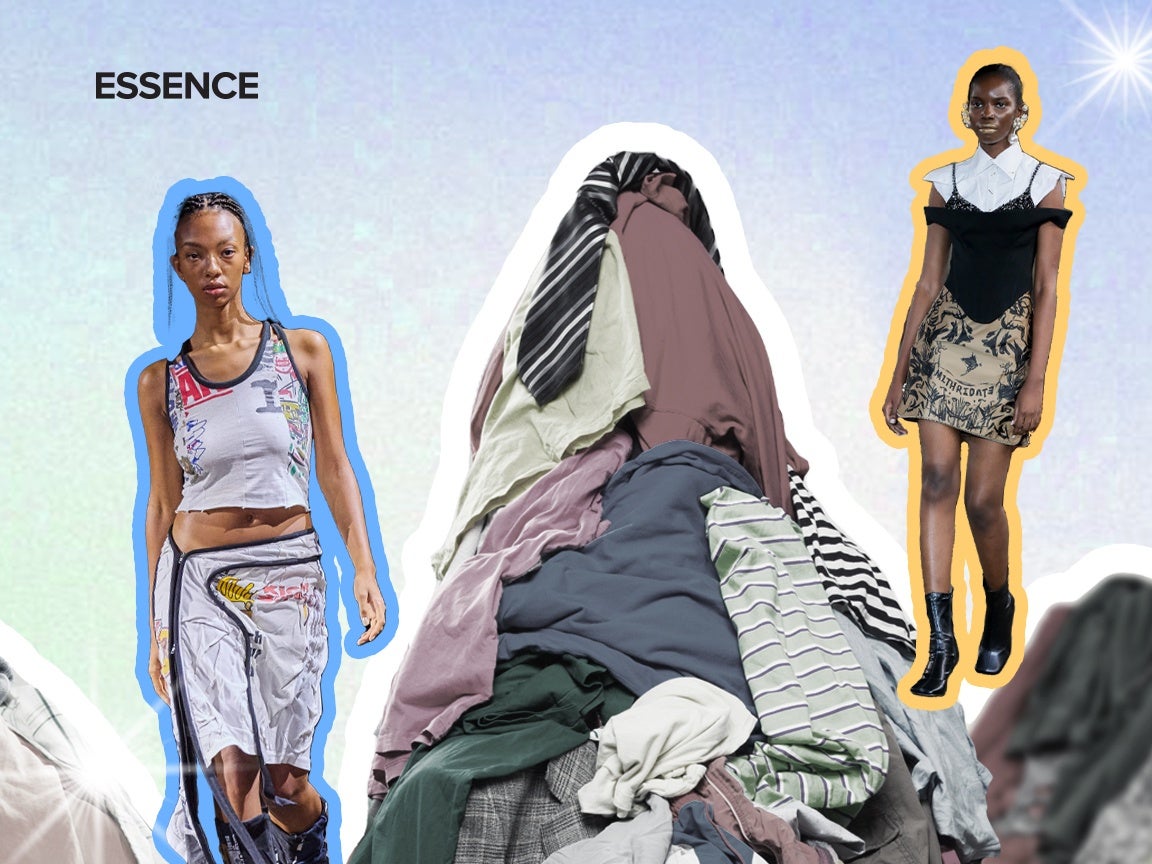
Sustainability is decidedly not a fashion trend. With the amount of waste from the industry dumped in the global south, to say that eco-conscious production is pressing would be an understatement. But for a business that relies on turning out the next big thing, will global efforts at sustainability be reflected at New York fashion week?
Designers like Jacques Agbobly of Black Boy Knits are helping nudge the industry.
“Our waste from knitting within the last two years can fit in a 14 x 19 Ziploc bag, which we are planning to integrate into our design process for future products,” Agbobly says to ESSENCE. “We are committed to providing custom and durable products while making sure we keep our own carbon footprint as low as possible by consuming less energy, wasting less resources, and overall contributing to less waste.” After two years of being in business, Agbobly will debut at New York Fashion Week on September 12.
Black Boy Knits follows a made-to-order business model, removing the potential for excessive production. Their garments and the containers they use to ship are biodegradable, and all pieces are made with natural fibers. The New York-based brand also gives local customers the option to pick up their custom pieces at Agbobly’s studio. They can also go the extra mile—the designer can arrange to drop it off to them directly. As a team of one, they have full control to make sure the operation’s environmental impact stays small.
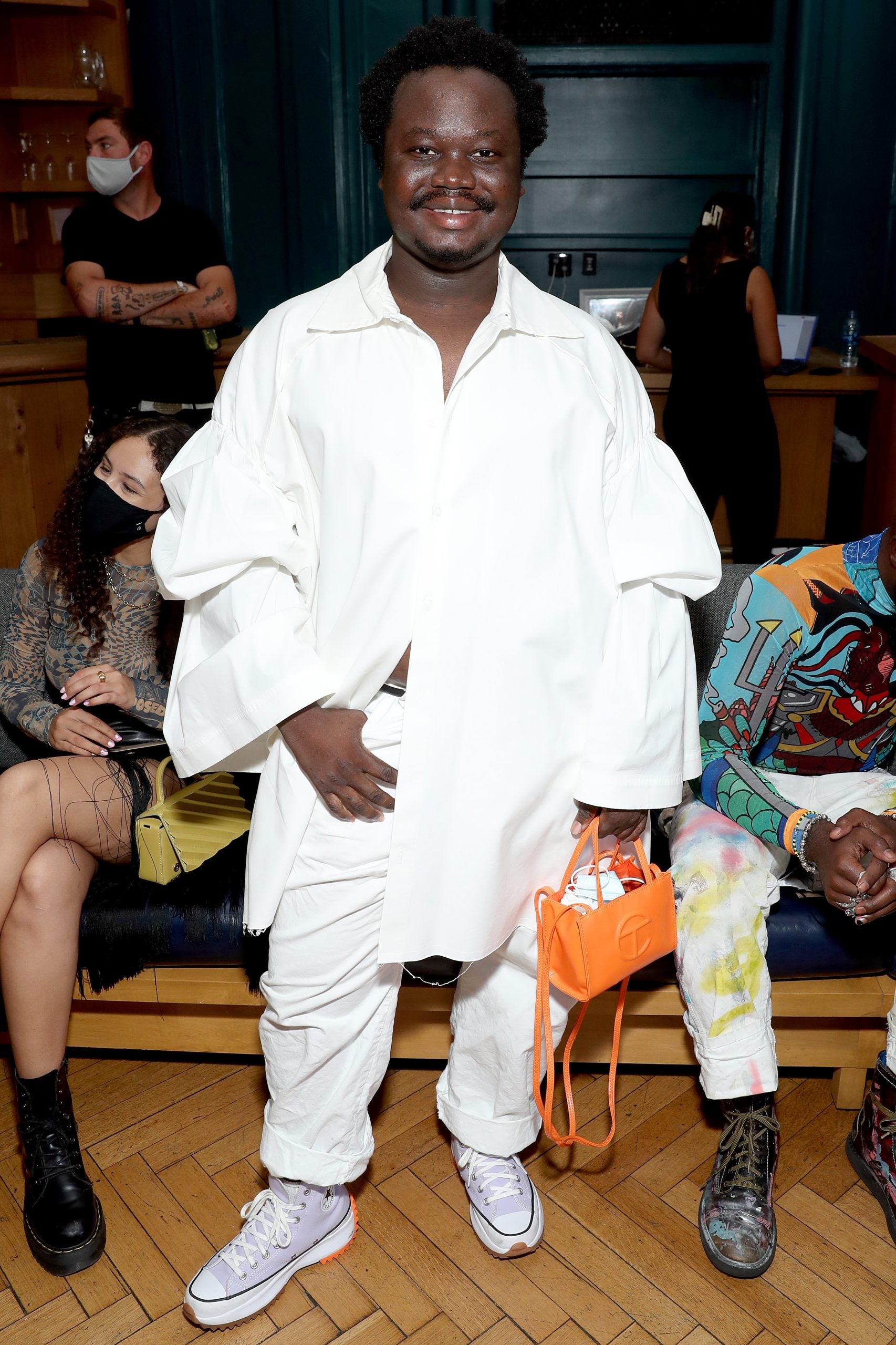
Elizabeth L. Cline, author of Overdressed and The Conscious Closet, believes smaller businesses like Agbobly’s are often at the vanguard of sustainable fashion. Beyond just having a less sizable output, they have a more intimate knowledge of their supply chain. With a less complex web of interactions, it’s easier for small business owners to identify any gaps in sustainability and address them head on. Meanwhile, larger brands may face the hurdle of having to answer to more stakeholders, who might prioritize profit over the planet.
“In general we do see a lot of sustainable innovation and authenticity coming out of those smaller companies,” Cline says. “That makes sense because a lot of the bigger companies are publicly held conglomerates, so their focus is always, always on increasing profits for their shareholders, which sometimes it just ends up being that their business model is really in opposition to what’s good for the world around us.”
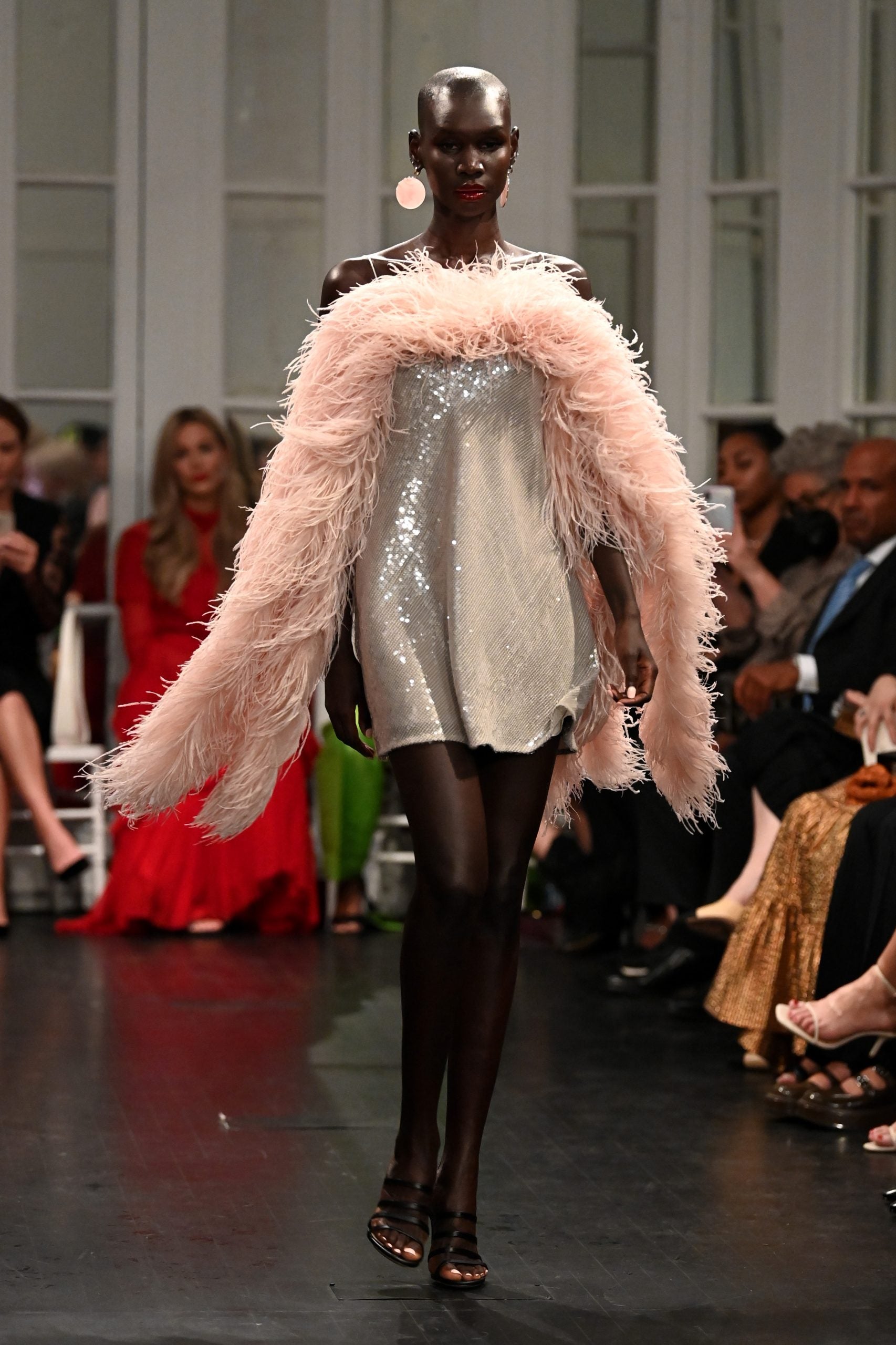
Sustainable fashion was born out of the contemporary environmental movement, with some scholars pointing to Rachel Carson’s 1962 text Silent Spring as the moment’s catalyst. The following decade would see scores of people shape their sartorial philosophies in opposition to the American consumerist attitude, embracing locally grown, artisan-made products and turning away from mass production.
In the 1980s and ‘90s, brands like Patagonia and ESPRIT zeroed in on the ethos championed by the hippies of the ‘70s. They positioned themselves as pioneers of sustainable fashion, making donations to environmental advocacy groups and putting money into research around less harmful materials to use in their pieces. These early adopters worked sustainability into their business models but many of the young labels of today, like Sami Miró Vintage and La Réunion, which use textile scraps and vintage pieces to create their garments, have that eco-friendly mentality woven right into the fabric of their brands.
Aja Barber, the author behind Consumed: The Need for Collective Change: Colonialism, Climate Change, and Consumerism, believes a company’s ethics will indicate the level of sincerity they have about ecological consciousness.
“I look at the ethics first and foremost before any of the sustainability claims,” Barber states. She explains many of the companies dominating the global fashion marketplace are guilty of greenwashing—giving the outward appearance of environmental responsibility without investing in real ways to scale back.
It’s simple enough for a business to release a line of sustainable pieces and spend PR dollars championing their one eco-friendly initiative, while still producing the overwhelming majority of their other merchandise in environmentally harmful ways. “As we well know, thanks to brands like H&M, it’s very easy to fake that stuff and confuse the general public. But one thing that people really have a hard time lying about is paying living wages. You can massage the truth as much as you want, but that’s not the same as saying, ‘yes, I can tell you exactly who makes our sweaters and that they’re paid above living wage, and that this job helps them to thrive in their lives.’ There are very few brands that can do that.”
Shein is another example of one of the industry’s biggest retailers promoting eco-friendly endeavors but still maintaining business practices some would find troubling. Their recent initiative, evoluSHEIN, boasts the use of recycled polyester and packaging produced with suppliers certified to the Global Recycled Standard. Another move came this summer as they committed $50 million over the next five years to focus on sustainable strategies that address the secondhand clothing trade and the garments that exit it as waste.
Still, Cline says consumers need to beware of the Shein’s lack of transparency around worker pay and other sustainability-related elements of the business. “Shein is a really good example of what we don’t want brands to do, because that company is not transparent at all,” Cline says. “We don’t even know how much of the product that it sells on its website is made in factories that it directly partners with, versus product that it just sources and it doesn’t really know anything about where it’s coming from — and that’s a huge problem, considering how much forced labor and just horrific working conditions exist in the fashion industry. Until Shein is willing to publish its full supplier list and tell us how they actually operate, that’s just a company I think people should stay away from.”
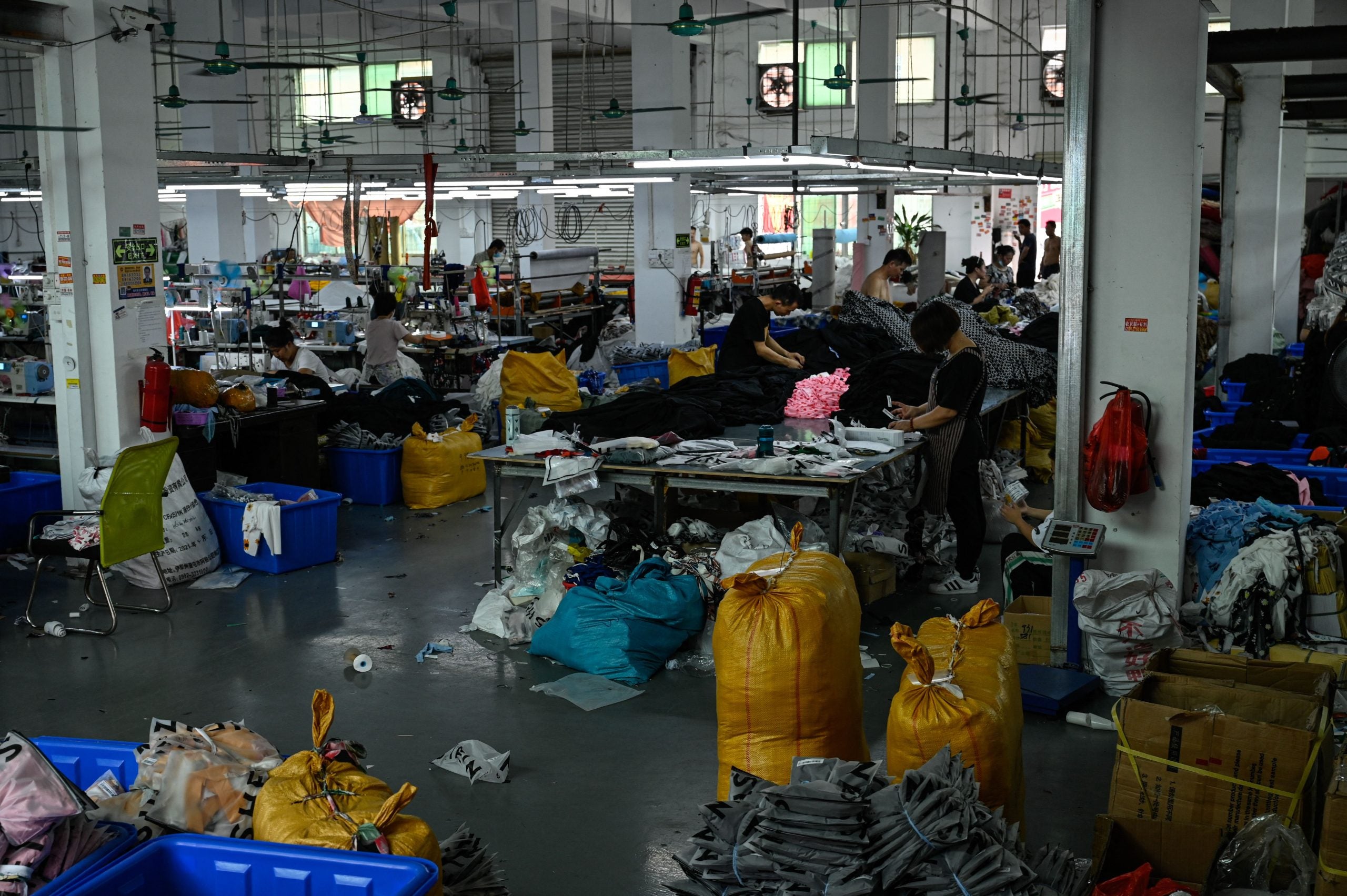
While a $50 million fund is certainly some kind of start, for a company valued at $100 billion, some critics felt the announcement was more of a PR push than a reflection of the brand’s genuine efforts at sustainability. If companies are able to successfully greenwash, they earn goodwill in their customer’s eyes while perpetuating their own environmentally harmful processes.
“We believe in a strong future for our industry through embracing innovation and circularity, including upcycling, recycling, re-commerce/resale and bespoke materials and processes.” -Steven Kolb, CFDA CEO
When it comes to NYFW, Cline notes the events represent only a small fraction of the industry’s environmental footprint. Since the week’s visibility is so high though, the CFDA (Council of Fashion Designers of America), the official owner of the Fashion Calendar and organizer of NYFW, has a big responsibility for setting the tone, influencing the way both designers and consumers think about fashion.
“We believe in helping to guide the industry on the path towards reducing its environmental impact and the transition to a fully decarbonized sector by 2050 through open access learning tools, resources, workshops and knowledge sharing,” says CFDA CEO Steven Kolb to ESSENCE. “While there is much urgency in working to navigate brands through the challenges in their businesses that contribute to the growing climate and waste crises, we view the path to sustainability as holistic — across environmental, social, and economic transformation. We believe in a strong future for our industry through embracing innovation and circularity, including upcycling, recycling, re-commerce/resale and bespoke materials and processes.”
Cline feels that some of the CFDA’s efforts, like its support for the organization Model Alliance and their recent pro-labor legislation push with the New York Fashion Workers Act, are to be applauded. Still, overall, producing a full collection can come at a high environmental cost, especially considering the carbon impact of the many who fly into New York for the shows. That figure, according to Kolb, accounts for the biggest portion of NYFW’s total carbon emissions.
“Our ‘Sustainability by Design: Rethinking NYFW’ study created in partnership with Boston Consulting Group identified that the largest part of fashion week’s 48,000 tons of CO2 emitted can be traced to transportation and air travel followed by venue and show production,” Kolb says. The study addresses the environmental impact of NYFW and lays out guidelines for reducing its footprint. It was first published in 2020. “We continue to encourage brands to present both virtually through Runway360 and in person – for physical presentations, brands can take steps to reduce the impact of their events and integrate sustainability into show production at every level including consideration to every detail such as lighting, avoiding single use plastic, and forgoing physical invites as a start.”
“While certain brands are leading by example, Barber knows the onus is shared by both the businesses producing these clothes as well as their consumers to do better.”
Some labels, like Gucci, have opted to move away from the fashion calendar entirely and go seasonless. This scales back their annual number of shows from five to two and allows them to debut collections not bound to any particular season of the year. Going seasonless isn’t the only way for brands to move the needle on climate responsibility; Cline points out brands like Gabriela Hearst and Studio 189 (both of whom are presenting lines at NYFW) as those who are putting their best foot forward. These labels use a combination of sustainable materials and positive social impact to make their clothing.
Hearst’s eponymous label is committed to environmental responsibility. The brand’s Spring/Summer 2020 collection was its first-ever carbon neutral runway show. They’ve also set a goal for eliminating the use of virgin materials by the end of this year. The Uruguayan designer/rancher is a member of the research steering committee for the Sustainability by Design: Rethinking NYFW study, alongside other environmentally conscious designers including Tracy Reese and Maria Cornejo.
Studio 189, the Ghana-based brand launched by Rosario Dawson and Abrima Erwiah, works with artisanal communities in Accra to produce their pieces and uses natural, plant based dye indigo.
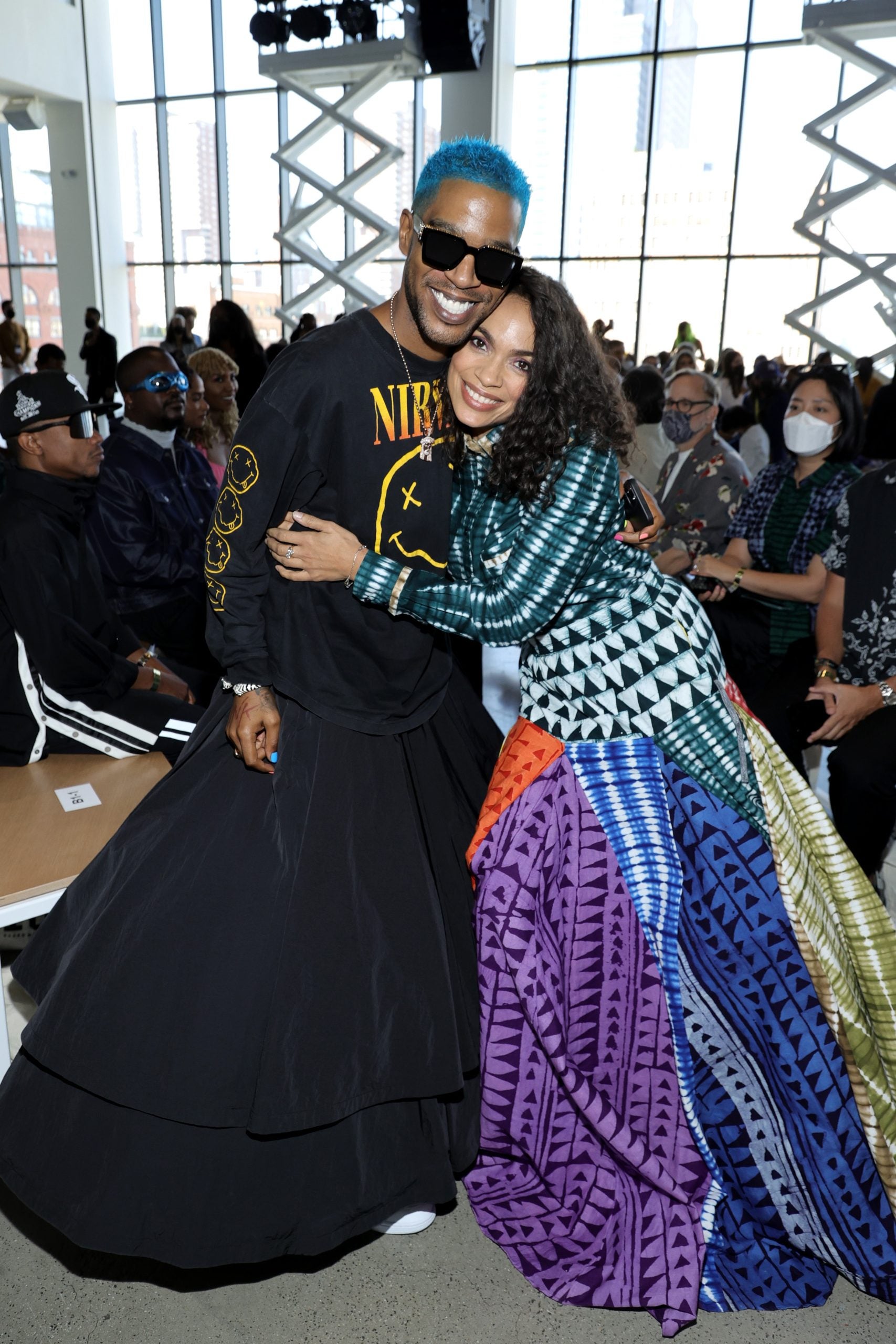
While certain brands are leading by example, Barber knows the onus is on the businesses, as well as their consumers. Taking real measures toward sustainable practices means buyers will have to confront some unsettling truths about themselves.
“There’s this idea that we can buy ourselves into sustainability, and we can’t,” Barber says. She stresses that the most sustainable fashion commitment one can make is to wear the clothes in their own closet. Barber calls out fast fashion buyers in particular, who purchased an average of 68 items of clothing a year as of 2018, as a demographic that could stand to do some self-reflection.
Fast fashion outlets are not always simple to identify since the pieces aren’t always on the cheaper end. Both Barber and Cline note the quantity of products a company sells can help determine whether or not they’re technically “fast fashion.” Their trend-driven nature means hundreds of new items are made available daily. Though luxury outlets are just as liable to be creating their pieces using unsustainable practices, fast fashion juggernauts like Zara, Shein, and H&M garner warranted negative attention for their waste, producing millions of garments annually.
“We’re a small percentage of the world who shops this way; people in the global south can’t even afford to buy the products that they make,” Barber says. “So they’re not doing the damage, it’s us. I think the consumer bears some responsibility, but the corporations bear more.”
Fast fashion labels have been delivering pieces in response to the ever-evolving trend cycle. Recently though, they’ve sought a more prominent role in tastemaking to break into the industry’s upper echelons at global fashion weeks. In February, PrettyLittleThing hosted a runway show during the events of London Fashion Week. Just this week, British fast fashion giant Boohoo and reality television star Kourtney Kardashian Barker announced a collaboration. The company named her their sustainability ambassador.
Boohoo will debut Kardashian Barker’s 45-piece line during NYFW.
Barber emphasizes there’s no way forward when consuming at our current level and that as individuals, we must curb demand. In her opinion, any conversation on charting a viable path toward sustainability must make mention of a term that will rub a lot of people the wrong way: degrowth.
“Degrowth has to really start to become an actual discussion,” she says, positing that it simply isn’t possible to stay the course determined by the current fashion calendar and still take meaningful steps toward sustainability. Though consumers may feel that it’s entirely out of their hands, both Barber and Cline stress that that sentiment couldn’t be further from the truth.
“Nobody is going to hold any of these corporations to account if all of us are just sitting here like, ‘I’m fine with it!’” Barber says. “Where does the motivation come from to even be mad at these organizations to get them to do better, and to challenge our lawmakers to hold them to account, if we’re all just willy-nilly shopping and throwing our money into it like no tomorrow? And if we keep going that way, there will be no tomorrow.”
Cline’s hope is that committed designers, with the support of consumers, are able to band together to steer fashion toward a more sustainable future, with regards to NYFW and beyond. She believes a small group of individuals have driven many of the eco-friendly strides–a heartening reminder that a handful of passionate people really can make a difference in this industry as we know it.
“Before the pandemic, sustainability was gaining steam at Fashion Week,” she says. “I just hope that the upheaval of the last few years has accelerated instead of dampened the conversation.”




